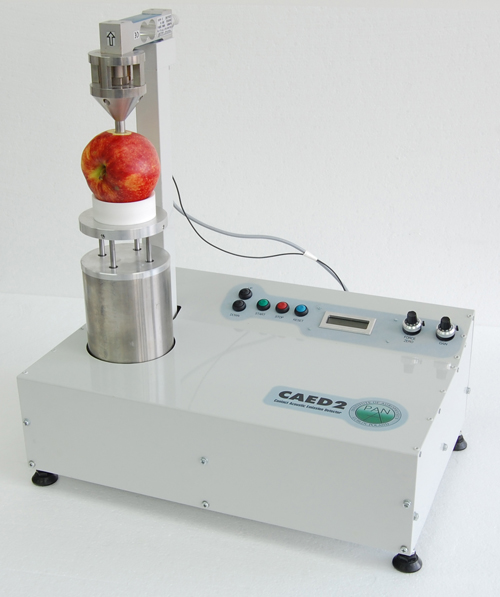Innovations
Contact Acoustic Emission Detector (CAED)
We have developed a new apple tester - the Contact Acoustic Emission Detector (CAED). CAED replaces the sensory panel for quality assessment. A standard procedure requires 10 apples of a certain material only and lasts only 10 minutes to classify their texture to one of 10 grades.
User manual can be downloaded here (PDF in Polish)
Publications:
- Zdunek A., Cybulska J., Konopacka D., Rutkowski K. 2011. Evaluation of apple texture with contact acoustic emission detector: a study on performance of calibration models. Journal of Food Engineering, 106, 80-87.
- Zdunek A., Cybulska J., Konopacka D., Rutkowski K. 2010. New contact acoustic emission detector for texture evaluation of apples. Journal of Food Engineering, 99, 83-91.
- Zdunek A, Cybulska J., Konopacka D., Rutkowski K. 2011. Inter-laboratory analysis of firmness and sensory texture of stored apples. International Agrophysics. 25, 67-75.
CAED was developed under the NR 12 0031 04 project founded by The National Centre for Research and Development (NCBiR).
Biospeckles

Publication:
- Adamiak A., Zdunek A., Kurenda A., Rutkowski K.. 2012. Application of the biospeckle method for monitoring bull’s eye rot development and quality changes of apples subjected to various storage methods-preliminary studies. Sensors, 12(3), 3215-3227.
- Kurenda A., Adamiak A., Zdunek A.. 2012. Temperature effect on apple biospeckle activity evaluated with different indices. Postharvest Biology and Technology 67, 118–123.
- Zdunek A., Herppich W.B.. 2012. Relation of biospeckle activity with chlorophyll content in apples. Postharvest Biology and Technology, 64, 58–63.
- Zdunek A., Cybulska J.. 2011. Relation of Biospeckle Activity with Quality Attributes of Apples. Sensors, 11, 6317-6327.
At present, a device for biospeckle evaluation has been developed under the NR 12 0137 10 project founded by The National Centre for Research and Development (NCBiR).
